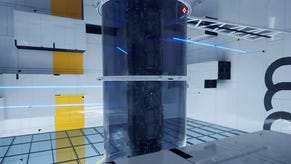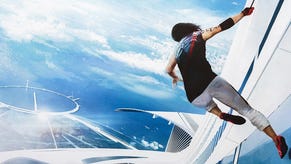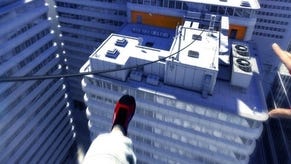Performance Analysis: Mirror's Edge Catalyst
Final console code sees substantial improvements over the beta.
With the switch to Frostbite 3 for this reboot, Mirror's Edge Catalyst targets a 60fps update over the 30fps of the original's last-gen debut. On sampling the beta a few weeks ago, the upgrade in smoothness and controller response was immediately apparent, where gameplay felt far more refined as a result. However, frame-rates were far from stable, and while PlayStation 4 handed in a decent level of consistency, Xbox One often struggled to hit 60fps for long stretches of play. But DICE prides itself on its optimisation skills, and the good news is that the final game offers a substantial performance improvement over the beta.
That translates into a much tighter lock on the target 60fps. The boost to performance is fairly light on PS4, but there are major gains on Xbox One, where the experience is considerably smoother than our last look at the game. In the beta, frame-rates fluctuated between 40-60fps across a general run of play, but now, performance rarely gets in the way of the action - outside of a few demanding scenes.
Some sequences still cause notable issues though - an escape from Elysium Labs causes frame-rates to come down to 40fps at one rare point, as the engine appears to struggle with streaming in data for the next map segment. The situation here isn't great, but on the plus side, performance rarely drops this low for too long - and in the final build, this level of instability doesn't last for longer than a second. As a result, with the optimisations made by DICE since the beta, the experience on Xbox One is now broadly on a par with the PS4 game in terms of baseline performance.
Meanwhile, there are fewer improvements in the final release on PS4. Streaming-related issues are reduced slightly - just like on Xbox One - with fewer spikes up to 100ms cropping up during play. However, frame-rates remain similar to the beta, with mild dips to the high to mid-50s on occasion. It's not a perfect 60fps, but thankfully these blips rarely intrude on the action and the experience mostly delivers a solid level of fluidity for long stretches of rooftop-leaping antics. It's an area that arguably didn't need much improvement before, and the result here still holds up well in the final game.
In terms of the game's cut-scenes, a heavy reliance on pre-rendered video sequences persists from the beta - notably used at the start and end of each level. These encodes are fixed at 30fps, unlike the in-engine scenes which freely run at 60fps. The good news is the distracting stutters seen in the beta (which could hiccup down to the low 20fps line) are greatly minimised for the final release, and the worst we see is occasional single-frame drops.
Both current-gen machines are much improved in frame-rate - but graphical settings have visibly changed since the beta. For one, motion blur is removed completely this time, with no option to manually reinstate this on PS4 or Xbox One. This effect's absence doesn't appear to make any difference to performance on PS4, perhaps indicating this change was more an artistic choice than a technical necessity. Otherwise, draw distances are improved over the beta - notably more so on Xbox One - while its lighting model is also given a few tweaks, with different saturation levels and light sources in many scenes.
Mirror's Edge: Catalyst's final form is in much better shape, and barring the removal of motion blur, these other enhancements in visuals and frame-rates are a welcome surprise. However, image quality still divides the two console releases: PS4 hands in a sharper 900p presentation compared to a rougher 720p setup on Xbox One. However, performance is now typically equal for most scenes, and so the main advantage on PS4 is its clearer image. First impressions suggest a confident showing from DICE, and one that highlights how diligently the team has worked to optimise the game right up to its launch day. We'll have more Mirror's Edge Catalyst coverage soon, with a deeper console comparison, alongside a look at the PC version, which delivers further improvements to the game's visual quality - plus some impressive performance on mainstream gaming hardware.

















